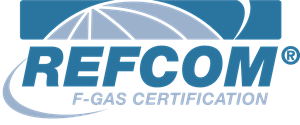Meeting the Demands of Growing Businesses
As UK businesses expand, many find their existing air conditioning systems struggling to keep pace. Whether it’s an office in Basingstoke that’s taken over the neighbouring floor, a retail unit in Woking doubling its showroom, or a restaurant in Marlow increasing its seating capacity, expanding spaces bring new cooling demands.
Unfortunately, many companies underestimate the complexity of expanding existing systems — simply adding extra units or ducting can lead to imbalances, inefficiencies, and compliance risks.
This blog explains how businesses can properly scale their commercial air conditioning systems, the challenges they must navigate, and why working with a certified installer like ClimateWorks is essential.
Why Expanding Air Conditioning Systems Requires Careful Planning
A growing workspace or customer-facing area increases not only square footage but also:
- Cooling load due to additional people and equipment.
- Zoning complexity (new areas may have different cooling needs).
- Integration challenges with existing controls and infrastructure.
Without proper design, expanded systems can deliver poor comfort, waste energy, or even breach UK regulations [1]. This is particularly important in sectors like healthcare, hospitality, and data centres, where temperature stability is critical.
When Should You Expand vs. Replace a System?
Signs You Can Expand
- The core system (compressors, chillers, or VRF units) has unused capacity.
- Ductwork or refrigerant lines can handle the additional load.
- Control systems can integrate new zones.
- The system still meets current refrigerant and energy regulations.
Signs You Should Replace
- The current system is nearing the end of its lifespan.
- Energy consumption is already high, indicating inefficiency.
- Equipment uses phased-out refrigerants (like R-22, banned under F-Gas rules [2]).
- You need a major redesign to accommodate new layouts or uses.
Challenges in Expanding Commercial Systems
Expanding a system is not just about adding more units. Common challenges include:
- Capacity Mismatch: Overloading existing equipment leads to breakdowns.
- Control Complexity: New zones must integrate with old controls or a Building Management System (BMS).
- Aesthetic Considerations: Additional equipment must not spoil the building’s visual appeal, especially in places like Henley-on-Thames or Marlow.
- Compliance Risks: All new work must comply with F-Gas, Building Regulations, and EcoDesign standards [3].
Professional consultation ensures these challenges are addressed systematically.
Case Study: Office Expansion in Woking
A corporate client in Woking approached ClimateWorks for help expanding their existing VRF system after taking over an additional 5,000 square feet of office space.
Key project elements included:
- Conducting a detailed load analysis to confirm the existing system had capacity.
- Adding five new fan coil units across three zones.
- Updating the BMS to include the new zones.
- Rebalancing the refrigerant flow to maintain system efficiency.
- Providing staff training on the expanded control system.
The result was a seamless system expansion that preserved energy efficiency and ensured optimal comfort across the enlarged workspace.
Best Practices for System Expansion
1. Start with a Professional Assessment
An expert assessment confirms whether expansion is feasible or if replacement is the better route.
2. Use Certified Installers
UK law requires F-Gas-certified professionals to handle refrigerants. Using uncertified installers risks fines and invalid warranties.
3. Prioritise Energy Efficiency
Expansion projects are an ideal time to upgrade system controls, add inverter-driven components, or switch to low-GWP refrigerants.
4. Plan for the Future
Design flexibility into the system to accommodate further growth or layout changes.
Bullet Summary: Steps to a Successful System Expansion
- Conduct a detailed cooling load assessment.
- Confirm existing equipment has sufficient capacity.
- Select compatible new units or components.
- Integrate new zones with control systems or BMS.
- Ensure all work meets regulatory and safety standards.
- Plan future-proofing upgrades where possible.
Why ClimateWorks is the Best Partner for System Expansions
Serving businesses in Basingstoke, Woking, Marlow, Henley-on-Thames, Southampton, and Bristol, ClimateWorks brings unmatched expertise in designing, installing, and maintaining large-scale commercial air conditioning systems.
We provide:
- Comprehensive assessments to guide expansion decisions.
- Access to top-tier equipment and components.
- Certified installation teams ensuring compliance and safety.
- Transparent pricing and project timelines.
- Ongoing support to keep systems running at peak performance.
👉 Get in touch with ClimateWorks today to discuss your commercial air conditioning expansion project and secure expert advice.
References
[1] UK Department for Energy Security and Net Zero. (2024). Energy Performance in Buildings.
https://www.gov.uk/guidance/energy-performance-of-buildings
[2] UK Government. (2024). F-Gas Regulations Overview.
https://www.gov.uk/guidance/using-fluorinated-gases-f-gases
[3] Building Regulations Approved Document L.
https://www.gov.uk/government/publications/conservation-of-fuel-and-power-approved-document-l
Author Bio
Dr. Julian Carter is a highly experienced thermal systems expert with over 15 years in the field, holding a PhD in thermal systems. His career spans academic research, consulting, and teaching, focusing on air conditioning and refrigeration systems. Dr. Carter bridges the gap between theoretical advancements and practical applications, providing expert insights to organisations like ClimateWorks, where his guidance informs decision-making and industry best practices. Notably, he has worked on international projects with organisations such as Daikin Industries, the International Institute of Refrigeration (IIR), and the United Nations Environment Programme (UNEP). Currently a lecturer at Edinburgh University, Dr. Carter combines his expertise with a passion for educating the next generation of engineers and advancing climate control technologies.
Get a fast no obligation quote today





